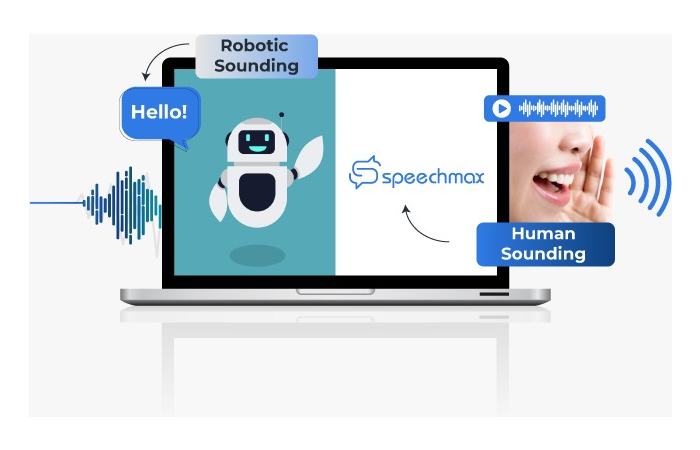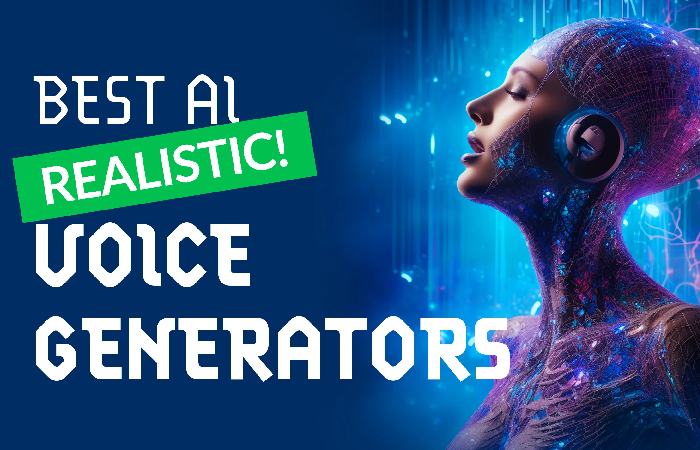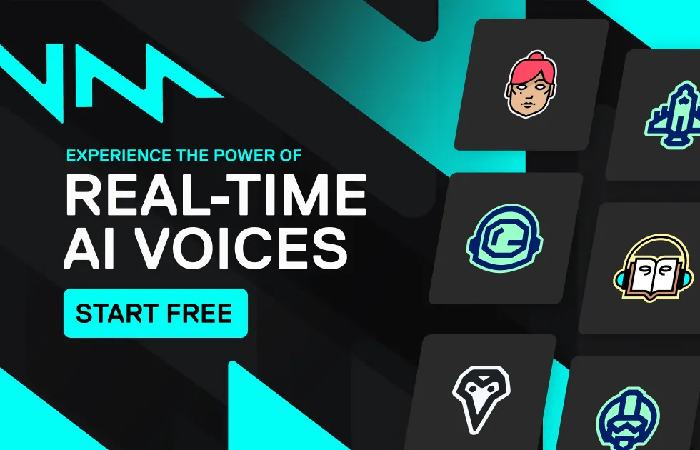Table of Contents
Ai Voice Generator
AI Voice Generator- As artificial intelligence continues to advance at breakneck speed, AI systems are getting exponentially better at tasks. You may have recently encountered an AI voice generator and wondered how it works and why the technology is becoming so prevalent.
we’ll explore the critical components of AI voice generation systems, how they are voice generators developing and training, and how they stand to impact various industries and aspects of our daily lives in the coming years. Whether you’re curious to understand a critical AI capability or how it may affect your business or career, read on to get answers to everything you’ve always wanted to know about AI voice generators.
What Is an AI Voice Generator?

An artificial intelligence voice generator is an AI system that can generate synthetic speech. It uses machine learning algorithms to analyze hundreds of hours of human speech and learn how to create new speech that sounds natural.
AI voice generators, or speech synthesis systems, convert text into audio with voices that mimic human speech. They can generate speech with different accents, tones, and styles for various needs. Some systems generate speech like a specific human; others create generic but natural-sounding voices.
AI voice generators have many practical applications. They can read text aloud for people with visual impairments, narrate audiobooks or podcasts, provide speech for digital assistants and GPS navigators, translate between languages, and more. Companies are developing AI voice generators to reduce costs and human effort in customer service, telemarketing, and transcription services.
As technology improves, AI-generated speech becomes more seamless and omnipresent. Advancements in expert systems and the availability of massive datasets have fueled rapid progress in speech synthesis, making AI voice generators more intelligent and more human-like than ever before. With continued improvement, these systems may one day match human voices in quality and become indistinguishable from real people.
How Do AI Voice Generators Work?
AI voice generators, called text-to-speech systems, convert digital text into audible speech. They utilize machine learning algorithms and neural networks trained on vast data to generate natural, synthetic voices.
How AI Voice Generators Create Speech
AI voice generators go through several steps to produce speech:
- Text Analysis: The system analyzes the input text to determine the meaning and appropriate pronunciation of words based on context. It identifies parts of speech like nouns, verbs, and adjectives.
- Linguistic Rules: The system applies linguistic rules around grammar, syntax, and phonetics to convert the text into a phonetic representation. It ensures proper pronunciation, cadence, and intonation.
- Digital Signal Processing: The phonetic sequence is converted into audible speech through speech synthesis. The system generates a digital signal to emulate vocal tracts and create the speech waveform.
- Machine Learning Refinement: AI voice generators leverage neural networks trained on thousands of hours of speech data to make the synthesized speech as natural and human-like as possible. The neural networks help refine and improve the speech over time based on feedback and additional learning.
With massive datasets and computing power, AI voice generators can produce highly realistic synthetic voices for various applications like virtual assistants, audiobooks, podcasts, and more. While imperfect, these systems rapidly advance and sound more human with each new iteration.
Examples and Use Cases of AI Voice Generators

AI voice generators use expert system algorithms to generate synthetic speech. There are a few well-known examples:
Amazon Polly
It is a cloud service that converts text into lifelike speech. It can generate speech in various languages, including US English, UK English, German, French, and Spanish. Companies use Polly to develop voice-enabled products and services.
Google Cloud Text-to-Speech
Google Cloud Text-to-Speech converts text into human-like speech in over 180 voices across more than 30 languages. It powers voice features in Google products like Google Assistant, Google Translate, and Google Cloud Speech-to-Text. The technology is also available to developers and businesses through the Google Cloud Platform.
Anthropic Claude
Claude is an AI assistant with a synthetic voice creates Anthropic. It is design helpful, harmless, and honest. Claude’s voice and responses are generated using machine learning models trained on human conversations. The goal is for Claude to be respectful, empathetic, and trustworthy in their interactions.
Lyrebird
Lyrebird is an open-source AI model that can generate synthetic speech using neural networks. It is trained on a large dataset of human speech to produce natural-sounding voice samples. Lyrebird allows developers to create custom AI voice assistants and is used by companies to build speech-enabled products. The technology has applications ranging from virtual assistants to audiobook narration.
In summary, AI voice generators are software tools and services that utilize machine learning to produce human-like synthetic speech. They have many practical use cases and are being adopted by major tech companies, startups, and developers to create innovative voice-enabled applications. With continued progress, these systems are getting closer to mimicking human voices seamlessly.
FAQ
Here are some frequently asked questions about AI voice generators:
What Exactly Is An AI Voice Generator?
An AI voice generator utilizes machine learning and neural networks to generate artificial speech that sounds natural and human-like. AI set-ups are trained on vast amounts of data to learn human speech patterns and mimic how people talk.
How Are AI Voices Generated?
AI voice generators use a process called speech synthesis to generate artificial speech. The systems analyze human speech recordings to understand pronunciation, cadence, intonation, and other attributes of natural speech. The AI then generates new speech by piecing together parts of the tapes and modifying them to produce novel sentences and phrases in the desired voice and style.
Are AI Voices Realistic?
AI voice technology has become remarkably sophisticated in recent years. The latest AI voice generators, like those developed by companies such as Anthropic and Amazon, can produce speech nearly indistinguishable from human voices. However, AI voices sometimes sound unnatural, especially when generating longer or more complex speech. The technology continues to improve rapidly, though.
What Are Some Uses Of AI Voice Generators?
AI voice generators have many practical applications, including:
- Virtual assistants that can speak and respond to voice commands
- Automated phone menus and announcements
- Audiobooks and podcasts narrated by AI
- Voiceovers for videos, commercials, and digital assistants
- Translation of text into natural-sounding speech in various languages
- Accessibility tools for the visually impaired
- Entertainment, art, and creative works featuring AI-generated voices
The future potential of AI voice technology is vast and promises to transform how we interact with and experience technology. AI voices are becoming increasingly integrated into our daily lives and look poised to reshape human-computer interaction fundamentally.
Conclusion
As AI technologies advance rapidly, voice generation systems become increasingly sophisticated and lifelike. While current AI voice generators have limitations, they are calm improve many areas of our lives.
Whether helping those with speech disorders communicate more efficiently, enhancing virtual assistants and chatbots, or even bringing beloved characters and historical figures to life, artificial voices have much to offer.
Although some concerns remain about their potential misuse, AI voice generation is an exciting new frontier with promising applications that can enrich and improve human lives. The future is bright for this transformative technology if we’re thoughtful and intentional about developing and applying it.

